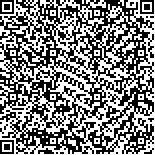吴宏燕,徐平,张汉庆,张莉萍,杨瑾.应用Kinect体感交互技术治疗肩关节功能障碍的康复疗效[J].中华物理医学与康复杂志,2017,39(3):207-210
扫码阅读全文

|
| 应用Kinect体感交互技术治疗肩关节功能障碍的康复疗效 |
|
| |
| DOI: |
| 中文关键词: 肱骨骨折;肩关节;运动疗法 随机对照试验 |
| 英文关键词: Humeral fractures Shoulder joint Exercise therapy Randomized controlled trials |
| 基金项目:武汉市卫生和计划生育委员会医疗卫生科研项目(WZ14Z03) |
|
| 摘要点击次数: 3764 |
| 全文下载次数: 5355 |
| 中文摘要: |
| 目的探讨应用Kinect体感交互技术治疗肩关节功能障碍的康复效果。 方法选取肱骨外科颈骨折术后导致肩关节功能障碍的患者51例,通过SAS软件简单随机化分为常规组(25例)和Kinect组(26例)。常规组进行关节松动训练术及康复锻炼法,Kinect组在常规组的基础上加用摘寿桃、高尔夫、芝麻开门、步步高升、投球等Kinect游戏模式。分别于治疗前和治疗4周后(治疗后),采用Constant-Murley肩关节评分系统(CMS)对2组患者的疼痛、日常生活活动(ADL)、肩关节活动范围(ROM)、肌力测试四个子量表进行检测和比较。 结果治疗后,Kinect组患者的肩部疼痛、ADL、肩关节ROM和肌力四项指标评分均较组内治疗前有明显改善(P<0.05);常规组的疼痛、ADL水平、肌力三项指标较治疗前均有明显改善(P<0.05),而肩关节ROM评分与组内治疗前比较,差异无统计学意义(P>0.05);Kinect组治疗后的疼痛、ADL、肩关节ROM及肌力评分分别为(12.5±2.2)分、(17.5±1.1)分、(34.7±3.9)分和(22.1±1.6)分,较常规组治疗后改善更为明显,组间差异有统计学意义(P<0.05)。治疗后,Kinect组和常规组的CMS总分评分分别为(85.1±8.6)和(55.3±7.3)分,组间差异有统计学意义(P<0.05)。Kinect组治疗后的总体优良率达到88.46%。 结论Kinect体感交互技术可明显改善肱骨外科颈骨折术后致肩关节功能障碍患者的康复效果。 |
| 英文摘要: |
| Objective To explore the utility of Kinect motion sensing technology in the rehabilitation of shoulder joint dysfunction caused by surgical neck fracture of the humerus. Methods Fifty-one patients with shoulder joint dysfunction caused by surgical neck fracture of the humerus were randomly divided into a Kinect group (26 cases) and a control group (25 cases). Both groups were given routine joint mobilization and rehabilitation training, while the Kinect group additionally spent time on a computer with Kinect software in activities such as picking peaches, playing golf, climbing ladders, throwing balls and with a game called “open sesame”. Before and after 4 weeks of treatment, both groups were assessed for pain, ability in the activities of daily living (ADL), and range of motion (ROM) of the shoulder joint using the Constant-Murley shoulder functional rating score scale (CMS) and a muscle test scale. ResultsAfter the treatment, significant improvement in all of the measurements was observed in the Kinect group, and in all except the average ROM in the control group. The average pain, ADL, ROM and muscular strength of the Kinect group were then all significantly better compared to the control group. After the treatment, the average total CMS score of the Kinect group was also significantly better. Among all the patients in the Kinect group, 88.46% had good or excellent treatment effect. Conclusion Kinect-based motion sensing technology can significantly improve rehabilitation outcomes for such patients. |
|
查看全文
查看/发表评论 下载PDF阅读器 |
| 关闭 |